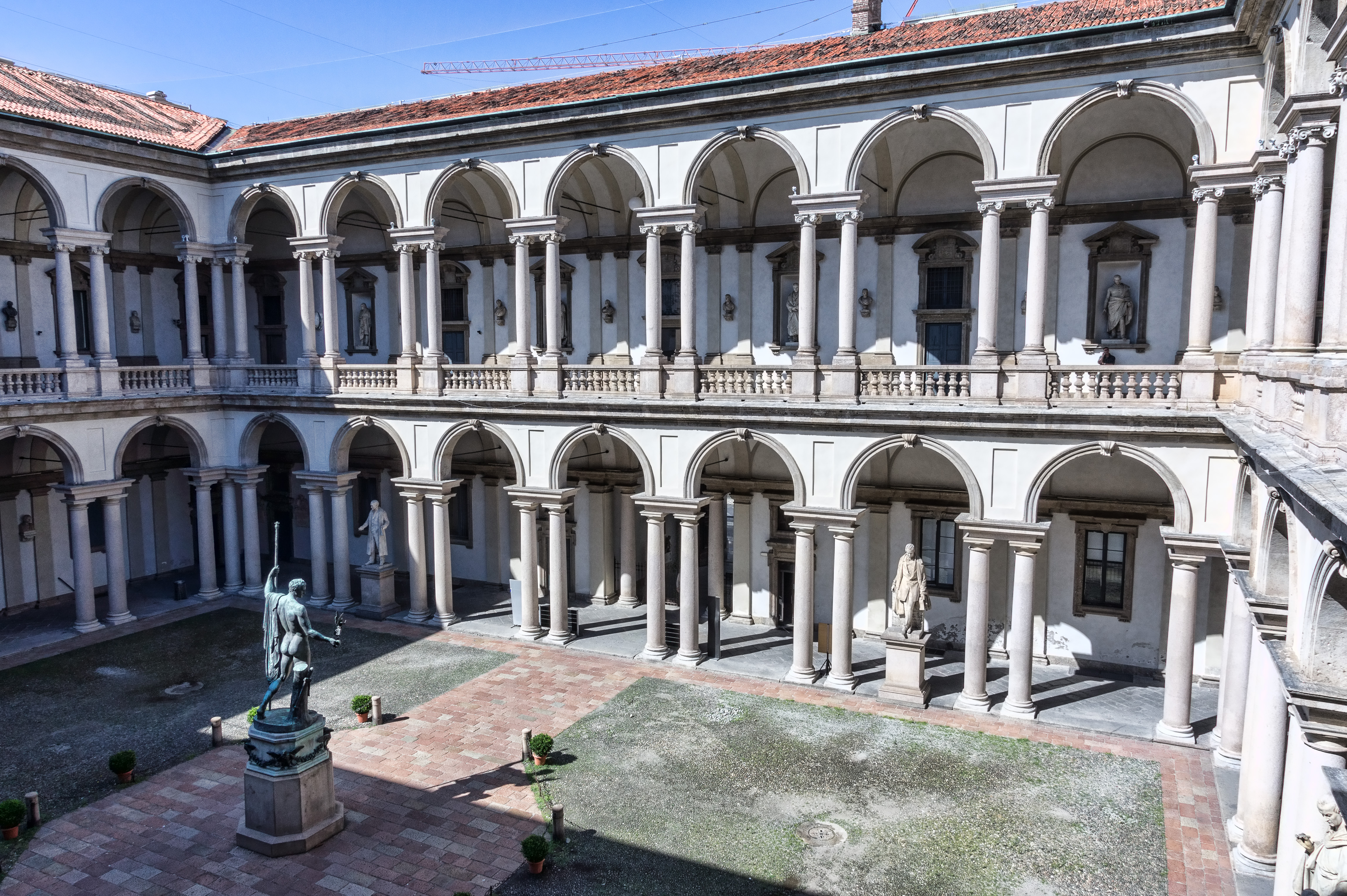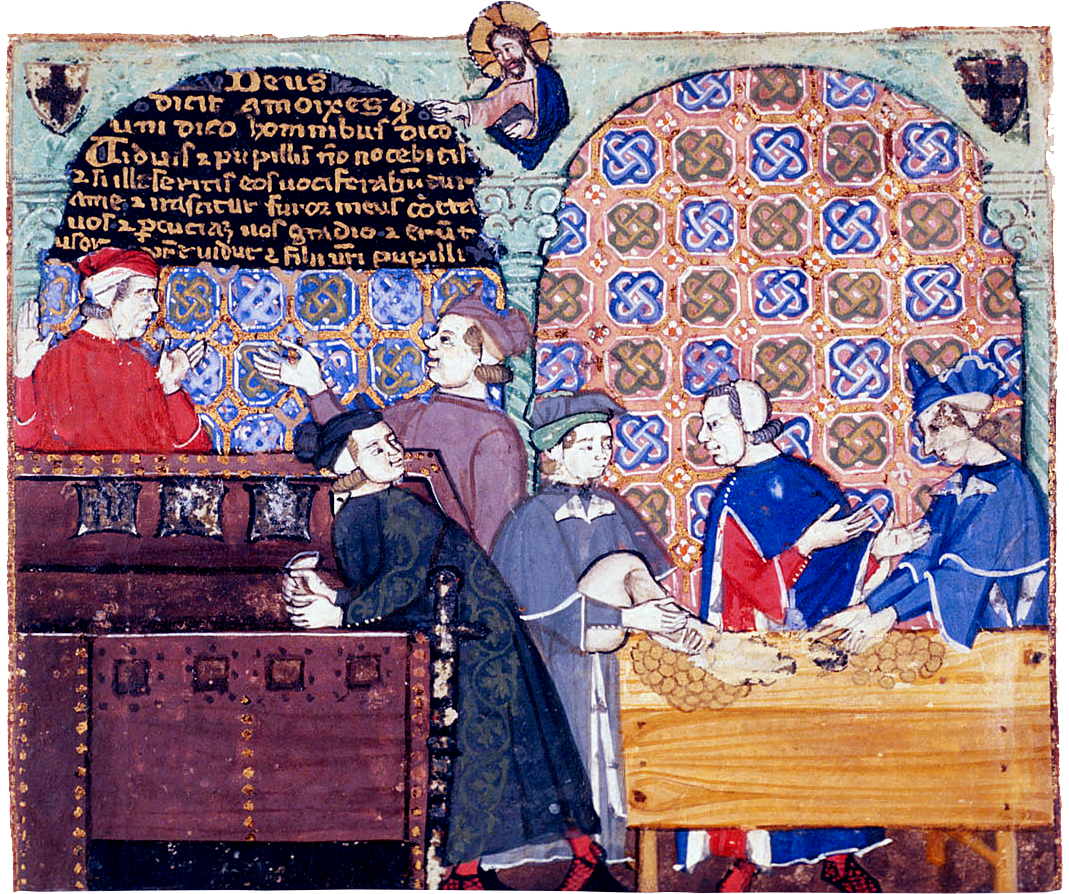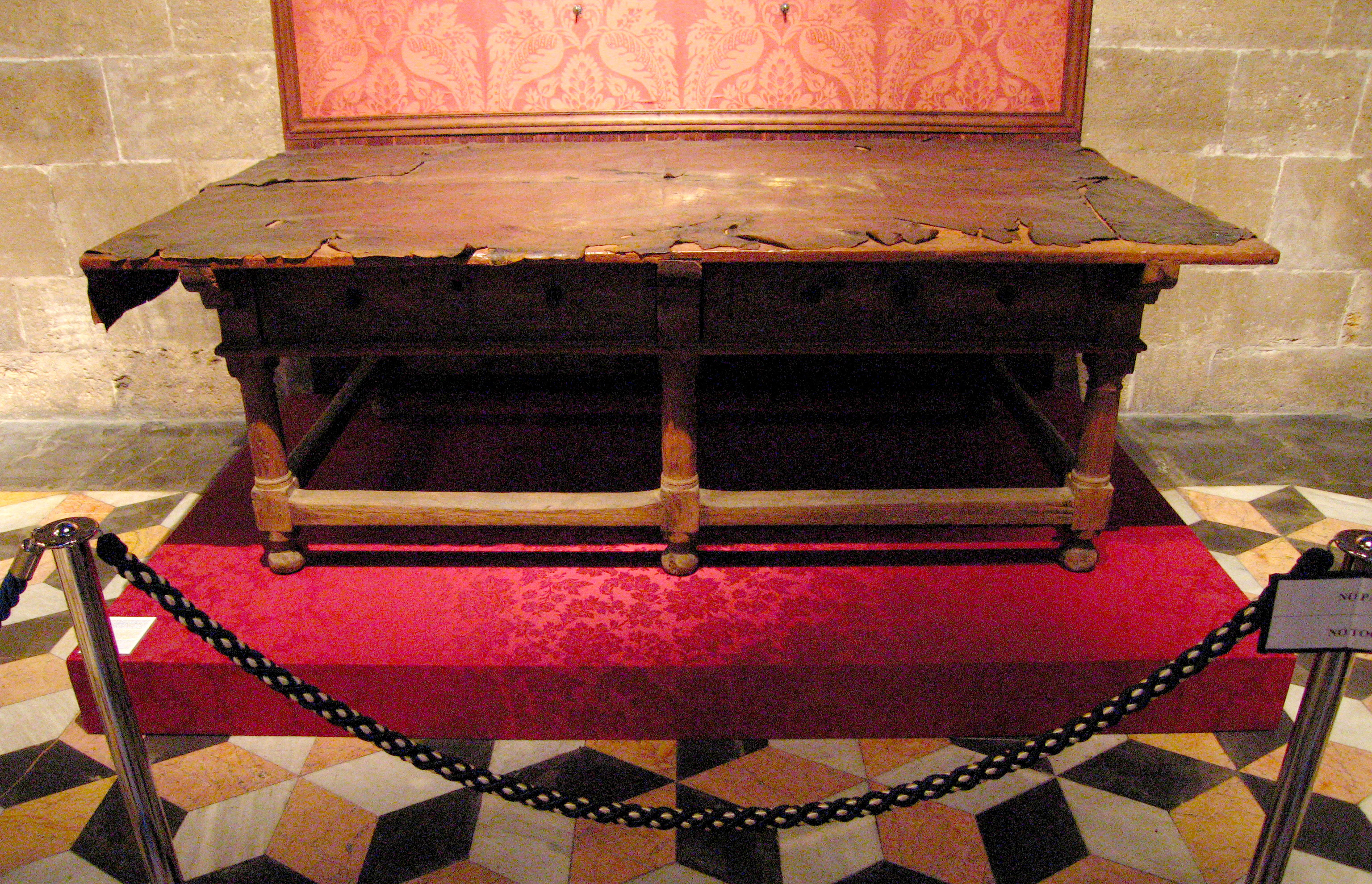|
Banco Del Giro
The Banco del Giro ( Venetian: ''Banco del Ziro''), also Banco Giro or Bancogiro, sometimes referred to in English as the Bank of Venice, was a public bank created by the Republic of Venice. It was governed by a magistrate called the ''Depositario''. History An early proposal for a ''banco per Comune'', a public municipal bank that would complement the operation of Venice's private banks, was made to the Venetian Senate by Senator Giovanni Dolfin in 1356. A comparable proposal was made again in 1374 by a committee headed by Michele Morosini. In 1587 the Republic founded the Banco della Piazza di Rialto to allow easy transactions' settlement without handling of metallic money. The ''Banco del Giro'' was established in 1619 and its administration was entrusted to the Senate, which appointed the ''Depositario'' from among its members. In 1637, the ''Banco di Rialto'' was merged into the ''Banco del Giro'' following financial difficulties. The bank ceased its activity in 1800, fo ... [...More Info...] [...Related Items...] OR: [Wikipedia] [Google] [Baidu] |
Pinacoteca Querini Stampalia - Il Bancogiro Di Rialto - Gabriele Bella
A pinacotheca (Latin borrowing from grc, πινακοθήκη, pinakothēkē = grc, πίναξ, pinax, (painted) board, tablet, label=none + grc, θήκη, thēkē, box, chest, label=none) was a picture gallery in either ancient Greece or ancient Rome. The name is specifically used for the building containing pictures which formed the left wing of the Propylaea on the Acropolis at Athens, Greece. The Pinacotheca was located next to the temple of Athena Nike. Though Pausanias speaks of the pictures "which time had not effaced",Pausanias, ''Description of Greece''book I, chapter xxii, page 31, section 6 translated by J. G. Frazer (1898) which seems to point to fresco painting, the fact that there is no trace of preparation for stucco on the walls implies that the paintings were easel pictures. The Romans adopted the term for the room in a private house containing pictures, statues, and other works of art. In the modern world the word is often used as a name for a public art gal ... [...More Info...] [...Related Items...] OR: [Wikipedia] [Google] [Baidu] |
Bank Of Venice
The Republic of Venice organized its first formal public bank in 1587, the ''Banco della Piazza di Rialto''. This followed earlier proposals and the steady collapse during the 16th century of the Republic's private banks. Another public bank, the ''Banco del Giro'', was established in 1619. Long before the creation of these banks, Venice was a pioneer in banking and finance in the public and private sectors, known throughout Europe for perfecting the system of double-entry bookkeeping and conducting business through book entry transactions. Several 19th century authors described a "Bank of Venice" formed in the 12th century, calling it Europe's first national bank and an innovator of non-redeemable debt-based money. Archival research corrected these accounts, distinguishing between the Republic's financing offices, the business of its private bankers, and the much later public banks. Grain Office and ''imprestiti'' In 1282 the Republic organized most public finance activities und ... [...More Info...] [...Related Items...] OR: [Wikipedia] [Google] [Baidu] |
Economy Of The Republic Of Venice
An economy is an area of the production, distribution and trade, as well as consumption of goods and services. In general, it is defined as a social domain that emphasize the practices, discourses, and material expressions associated with the production, use, and management of scarce resources'. A given economy is a set of processes that involves its culture, values, education, technological evolution, history, social organization, political structure, legal systems, and natural resources as main factors. These factors give context, content, and set the conditions and parameters in which an economy functions. In other words, the economic domain is a social domain of interrelated human practices and transactions that does not stand alone. Economic agents can be individuals, businesses, organizations, or governments. Economic transactions occur when two groups or parties agree to the value or price of the transacted good or service, commonly expressed in a certain currency. Howev ... [...More Info...] [...Related Items...] OR: [Wikipedia] [Google] [Baidu] |
16th-century Establishments In The Republic Of Venice
The 16th century begins with the Julian year 1501 ( MDI) and ends with either the Julian or the Gregorian year 1600 ( MDC) (depending on the reckoning used; the Gregorian calendar introduced a lapse of 10 days in October 1582). The 16th century is regarded by historians as the century which saw the rise of Western civilization and the Islamic gunpowder empires. The Renaissance in Italy and Europe saw the emergence of important artists, authors and scientists, and led to the foundation of important subjects which include accounting and political science. Copernicus proposed the heliocentric universe, which was met with strong resistance, and Tycho Brahe refuted the theory of celestial spheres through observational measurement of the 1572 appearance of a Milky Way supernova. These events directly challenged the long-held notion of an immutable universe supported by Ptolemy and Aristotle, and led to major revolutions in astronomy and science. Galileo Galilei became a champion o ... [...More Info...] [...Related Items...] OR: [Wikipedia] [Google] [Baidu] |
Former Central Banks
A former is an object, such as a template, gauge or cutting die, which is used to form something such as a boat's hull. Typically, a former gives shape to a structure that may have complex curvature. A former may become an integral part of the finished structure, as in an aircraft fuselage, or it may be removable, being using in the construction process and then discarded or re-used. Aircraft formers Formers are used in the construction of aircraft fuselage, of which a typical fuselage has a series from the nose to the empennage, typically perpendicular to the longitudinal axis of the aircraft. The primary purpose of formers is to establish the shape of the fuselage and reduce the column length of stringers to prevent instability. Formers are typically attached to longerons, which support the skin of the aircraft. The "former-and-longeron" technique (also called stations and stringers) was adopted from boat construction, and was typical of light aircraft built until the ad ... [...More Info...] [...Related Items...] OR: [Wikipedia] [Google] [Baidu] |
Hamburger Bank
The Hamburger Bank was a public credit institution founded in 1619 by the Free City of Hamburg. It operated independently until 31 December 1875, when it became part of the newly created Reichsbank. History The Hamburg City Council made the decision to create the bank in February 1619, following lengthy negotiations with its civic stakeholders. Like its model, the Amsterdamsche Wisselbank which had been founded in 1609, it was intended to improve monetary stability in uncertain times and to simplify trade between merchants. The numerous English merchant adventurers, Portuguese Sephardi Jews and Dutch religious refugees living in Hamburg at the time brought their capital and knowledge to the bank, thus contributing to its initial success. The bank was administered free of charge by two senators, two City elders (''Oberalten''), two "treasury citizens" (''Kammereibürger'') and five "bank citizens" (''Bancobürger''), namely citizens who had an account at the bank. The bank's prem ... [...More Info...] [...Related Items...] OR: [Wikipedia] [Google] [Baidu] |
Bank Of Amsterdam
The Bank of Amsterdam ( nl, Amsterdamsche Wisselbank, lit=Exchange Bank of Amsterdam) was an early bank, vouched for by the city of Amsterdam, and established in 1609. It was the first public bank to offer accounts not directly convertible to coin. As such, it has been described as the first true central bank, even though that view is not uniformly shared and a similar claim has been made for the Taula de canvi of Barcelona, established two centuries earlier. Unlike the Bank of England, established almost a century later, it neither managed the national currency nor acted as a lending institution (except to the government in emergencies); it was intended to defend coinage standard. The role of the Wisselbank was to correctly estimate the value of coins and thus make debasement less profitable. It occupied a central position in the financial world of its day, providing an effective, efficient and trusted system for national and international payments, and introduced the first-e ... [...More Info...] [...Related Items...] OR: [Wikipedia] [Google] [Baidu] |
Bank Of Saint George
The Bank of Saint George ( it, Casa delle compere e dei banchi di San Giorgio or informally as ''Ufficio di San Giorgio'' or ''Banco'') was a financial institution of the Republic of Genoa. It was founded in 1407 to consolidate the public debt, which had been escalating due to the war with Venice for trading and financial dominance. The Bank's primary mission was to facilitate the management of the San Giorgio shares (''luoghi''). It was one of the oldest chartered banks in Europe and of the world. The Bank's headquarters were at the Palazzo San Giorgio, which was built in the 13th century by order of Guglielmo Boccanegra, uncle of Simone Boccanegra, the first Doge of Genoa. Operations Its parent, Casa di San Giorgio administered the Bank, and needed frequent liquidity injection to support the war against Venice and Genoa's ailing public finance. By 1445, the Bank suspended operations focusing on servicing the Genoese state. However, it managed to reopen for business with the ... [...More Info...] [...Related Items...] OR: [Wikipedia] [Google] [Baidu] |
Taula De Canvi
The Taula de canvi ("Table of change" in Catalan), also Taula de cambi or simply Taula, was a type of municipal public bank that existed in the Crown of Aragon in the late Middle Ages and early modern period. The Taula de canvi of Barcelona, created in 1401 and still extant in diminished form in the 19th century, has been described as the first-ever central bank. Barcelona The first Taula de canvi was created following a request of the city of Barcelona's main governing body, the Consell de Cent, calling for the establishment of a public bank on 25 April 1400. It ceremonially started its operations on 20 January 1401, inside Barcelona's '. Structure and governance The Taula's charter, dated 1405 or 1412 depending on authors, is the oldest preserved public bank regulation. Its design remained essentially unchanged for 300 years until the early 18th century. The Taula was a fully-owned operation of the city with a city guarantee of its deposits, and there is no evidence that it ... [...More Info...] [...Related Items...] OR: [Wikipedia] [Google] [Baidu] |
Rialto
The Rialto is a central area of Venice, Italy, in the ''sestiere'' of San Polo. It is, and has been for many centuries, the financial and commercial heart of the city. Rialto is known for its prominent markets as well as for the monumental Rialto Bridge across the Grand Canal. History The area was settled by the ninth century, when a small area in the middle of the Realtine Islands on either side of the Rio Businiacus was known as the , or "high bank". Eventually the Businiacus became known as the Grand Canal, and the district the Rialto, referring only to the area on the left bank. The Rialto became an important district in 1097, when Venice's market moved there, and in the following century a boat bridge was set up across the Grand Canal providing access to it. This was soon replaced by the Rialto Bridge. The bridge has since become iconic, appearing for example in the seal of Rialto, California ("The Bridge City"). The market grew, both as a retail and as a wholesale marke ... [...More Info...] [...Related Items...] OR: [Wikipedia] [Google] [Baidu] |
Venetian Language
Venetian, wider Venetian or Venetan ( or ) is a Romance language spoken natively in the northeast of Italy,Ethnologue mostly in the Veneto region, where most of the five million inhabitants can understand it. It is sometimes spoken and often well understood outside Veneto: in Trentino, Friuli, the Julian March, Istria, and some towns of Slovenia and Dalmatia (Croatia) by a surviving autochthonous Venetian population, and Brazil, Argentina, Australia, Canada, the United States, the United Kingdom, and Mexico by Venetians in the diaspora. Although referred to as an "Italian dialect" ( vec, diałeto, links=no, it, dialetto) even by some of its speakers, the label is primarily geographic. Venetian is a separate language from Italian, with many local varieties. Its precise place within the Romance language family remains somewhat controversial. Both Ethnologue and Glottolog group it into the Gallo-Italic branch. Devoto, Avolio and Ursini reject such classification, and Tagliavin ... [...More Info...] [...Related Items...] OR: [Wikipedia] [Google] [Baidu] |
Sotoportego
Sotoportego (or sottoportego) is one of the characteristic elements of urban planning in the city of Venice. It is a passageway that goes underneath a building. The sotoportego height typically equals to that of the ground floor. Oftentimes, the sotoportego is the only access to a courtyard or a small square. Many sotoporteghi contain sacred images of the saints or Madonna. The images can be bas-reliefs made of the Istrian stone Istrian stone, ''pietra d'Istria'', the characteristic group of building stones in the architecture of Venice, Istria and Dalmatia, is a dense type of impermeable limestones that was quarried in Istria, nowadays Croatia; between Portorož and Pu ... or white marble. Types There are three basic types of sotoporteghi: *Sotoportego that connects a street (''calle'') or a campo with another street. This type is by far the most widespread in the city since in many cases these are absolutely necessary urban elements to ensure an access otherwise prevented b ... [...More Info...] [...Related Items...] OR: [Wikipedia] [Google] [Baidu] |



_per_capita_in_2020.png)





